| View previous topic :: View next topic |
| Author |
Message |
david916

Joined: 30 Apr 2021
Posts: 17
Location: Aylesbury



|
 Posted: May 03, 2021 08:21 Post subject: Collection of David Carter Posted: May 03, 2021 08:21 Post subject: Collection of David Carter |
|
|
A toxic beauty!
| Mineral: | Villiaumite |
| Locality: | | Kirovskii Mine, Kukisvumchorr Mountain, Khibiny Massif, Kola Peninsula, Murmanskaja Oblast, Northern Region, Russia |  |
|
| Dimensions: | 38x18x11mm |
| Description: |
| Matrix-free villiaumite specimen, fairly large with lovely carmine-red colour from the Kirovsky Mine in the Khibiny Mountains on the Kola Peninsula. Although beautiful and seemingly cubic, most villiaumite specimens of any size are usually simply cleavage fragments formed late in the development of a pegmatite and they are often followed by alkaline carbonates. Villiaumite is a moderately rare mineral form of sodium fluoride and is known from plutonic nepheline syenite rocks. A metal fluoride and easily soluble, villiaumite is highly toxic if ingested and it can react with moisture on the hands to be absorbed through the skin so is potentially harmful to humans. |
|
| Viewed: |
23360 Time(s) |
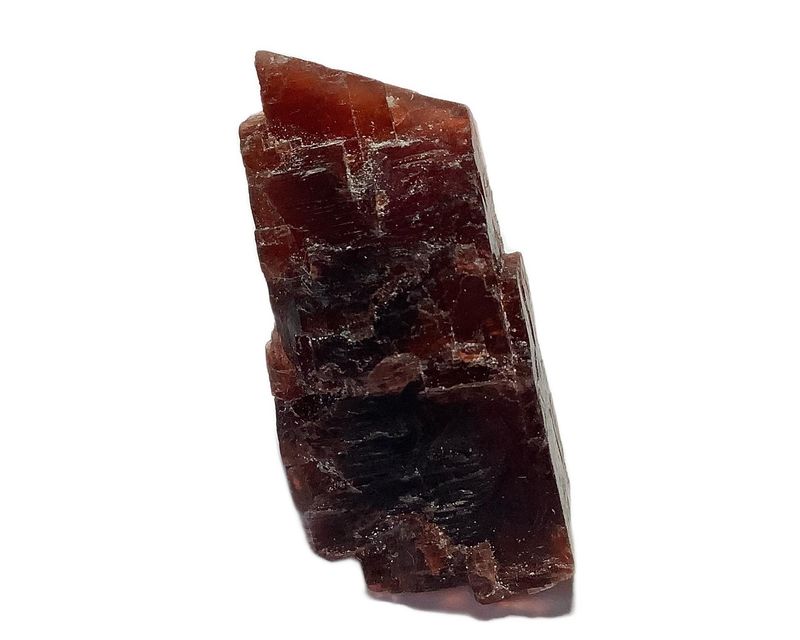
|
|
|
| Back to top |
|
 |
david916

Joined: 30 Apr 2021
Posts: 17
Location: Aylesbury



|
 Posted: May 03, 2021 08:51 Post subject: Re: Collection of David Carter Posted: May 03, 2021 08:51 Post subject: Re: Collection of David Carter |
|
|
Villiaumite within urtite from the Koashva Apatite Deposit on the Khibiny Massif
| Mineral: | Villiaumite with Aegirine |
| Locality: | | Koashva Open Pit, Koashva Mountain, Khibiny Massif, Kola Peninsula, Murmanskaja Oblast, Northern Region, Russia |  |
|
| Dimensions: | 50x44x37mm |
| Description: |
| Dark red villiaumite (crystals to 8.5mm) with black aegirine acicular crystals in a matrix of nepheline-syenite from the Koashva Open Pit in the Khibiny Mountains on the Kola Peninsula. Urtite is a coarse-grained, igneous rock consisting largely of nepheline, with apatite and ferromagnesian minerals (aegirine, aegirine-augite, and soda-iron amphibole). The rock is is a type of undersaturated syenite and derives from ‘Lujaururt’, the Sámi name for the Lovozero Massif tundras of the Kola Peninsula. |
|
| Viewed: |
23377 Time(s) |
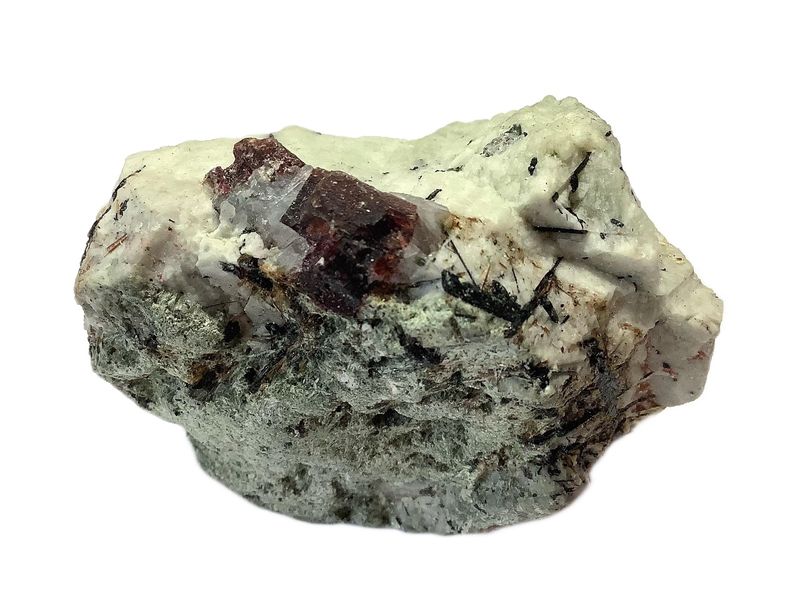
|
|
|
| Back to top |
|
 |
alfredo
Site Admin

Joined: 30 Jan 2008
Posts: 1012



|
 Posted: May 03, 2021 09:00 Post subject: Re: Collection of David Carter Posted: May 03, 2021 09:00 Post subject: Re: Collection of David Carter |
|
|
| Nice villiaumites, David. The Russian ones seem to be a deeper color than the lighter red or raspberry-colored ones from Namibia, of which I recently got some from an American friend who collected them himself at the Aris quarry. And this morning I was just reading a paper explaining why nanometer-size particles of native sodium cause villiaumite to turn red whereas they cause halite (like the ones from Carlsbad, New Mexico) to turn blue! And then your photos show up... uncanny coincidence.
|
|
| Back to top |
|
 |
david916

Joined: 30 Apr 2021
Posts: 17
Location: Aylesbury



|
 Posted: May 03, 2021 09:02 Post subject: Re: Collection of David Carter Posted: May 03, 2021 09:02 Post subject: Re: Collection of David Carter |
|
|
Nepheline-syenite with villiaumite
| Mineral: | Villiaumite |
| Locality: | | Koashva Open Pit, Koashva Mountain, Khibiny Massif, Kola Peninsula, Murmanskaja Oblast, Northern Region, Russia |  |
|
| Dimensions: | 48x29x18 |
| Description: |
| Dark red villiaumite in a matrix of nepheline-syenite from the Koashva Open Pit on the Kola Peninsula. A relatively rare Halite Group mineral, villiaumite occurs as gangue material deep in foyaite rocks and in miarolitic cavities within nepheline-syenite pegmatites. It forms granular and massive aggregates or imperfect crystals, cubic in appearance, often rounded. The approximate chemical composition of villiaumite is 54.75% Na (sodium) and 45.25% F (fluoride). It is readily soluble in water. |
|
| Viewed: |
23352 Time(s) |
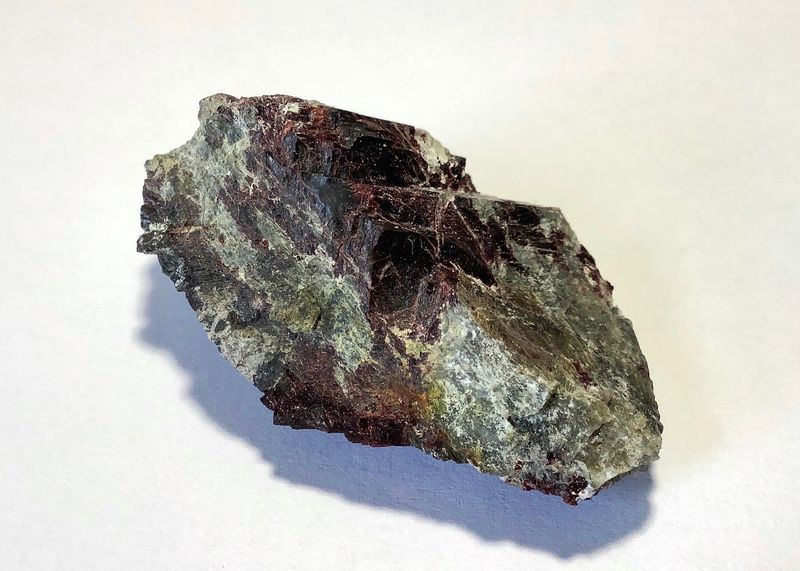
|
|
|
| Back to top |
|
 |
david916

Joined: 30 Apr 2021
Posts: 17
Location: Aylesbury



|
 Posted: May 03, 2021 12:16 Post subject: Re: Collection of David Carter Posted: May 03, 2021 12:16 Post subject: Re: Collection of David Carter |
|
|
Burmese fluorite
| Mineral: | Fluorite |
| Locality: | | Nyaung-gyin Village, Thabeikkyin Township, Pyin-Oo-Lwin District, Mandalay Region (Mandalay Division), Myanmar (Burma) |  |
|
| Dimensions: | 42x27x22mm |
| Description: |
| Myanmar (Burma) is classed as poor for richness of fluorite in terms of its overall mineral resources. Unusual rounded (botryoidal) aggregates of fluorite surfaced from Myanmar a few years ago, but they now seem to have largely disappeared from the collector market. Although fluorite is relatively common around the world, Burmese material is pretty scarce on the market. This small specimen of botryoidal lavender fluorite, showing the crystal growth in concentric layers, is from Nyaung Gyin village in Tha-Beik-Kyin Township, west of Mogok, Burma (Myanmar). |
|
| Viewed: |
23259 Time(s) |
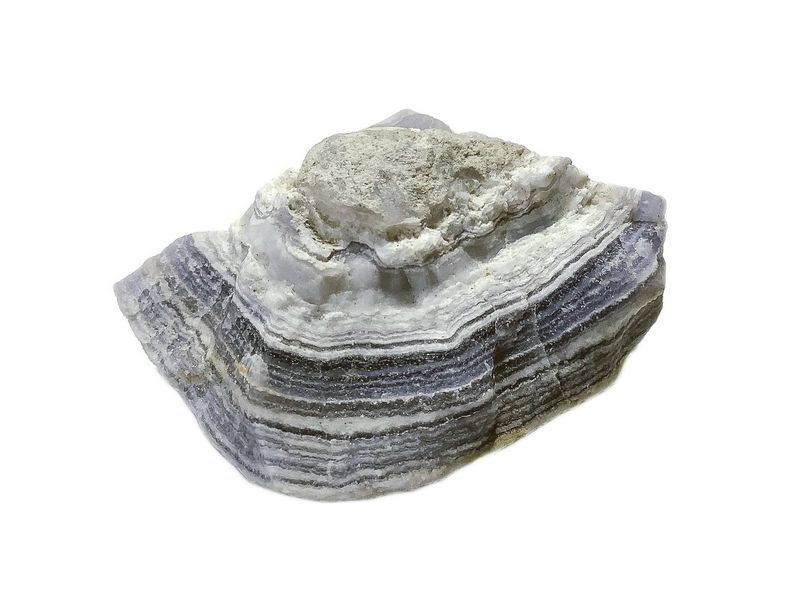
|
|
|
| Back to top |
|
 |
david916

Joined: 30 Apr 2021
Posts: 17
Location: Aylesbury



|
 Posted: May 03, 2021 12:28 Post subject: Re: Collection of David Carter Posted: May 03, 2021 12:28 Post subject: Re: Collection of David Carter |
|
|
A specimen with a somewhat interesting backstory and good provenance having latterly belonged to the Mineralien-Museum Andreas Gabrys in Lam, Bavaria, Germany. When that museum closed it was amongst the many partial lots that were auctioned off from the very large mineral collection on display there. A brief history of the Mineralien-Museum Andreas Gabrys:
In 1969, Andreas Gabrys and his wife founded and opened Mineralien-Museum Andreas Gabrys in Lam, which became a collection of more than 10,000 specimens from local and international locations. At the time he was mine manager of the Fürstenzeche (otherwise known as the Oswald Mine) which is also located in Lam, Germany, in the Bayerischer Wald (Bavarian Forest). Andreas had always collected rocks and minerals, so when the Fürstenzeche finally shut down he had time to pursue his hobby completely. He exchanged, collected and bought minerals from traders, miners and exchanges. His wish was to make these treasures accessible to the public. When Andreas died in 1994 his wife continued to run the museum until 2004. However, due to her age and illness, it became necessary for her to move into a nursing home. As a result, the museum was temporarily closed in the hope that someone in the local community or the mineral fraternity would be interested in it. Unfortunately, despite much communication and marketing, there was no interest in taking over the going concern because of all the associated ongoing expenses and logistics that would inevitably be required to run and maintain it. Manfred Gabrys (son of Andreas) and his wife Renate, both now elderly themselves, became responsible for the museum and its large mineral collection. They wanted to keep the collection intact and together as a legacy to Andreas Gabrys, but when it became sadly evident that a buyer would not be found the museum property was subsequently put on the market and the huge collection had to be dismantled and was sold off in partial lots.
| Mineral: | Fluorite and Quartz (variety eisenkiesel) |
| Locality: | | Johannesschacht Mine, Wölsendorf, Schwarzach bei Nabburg, Wölsendorf West District, Upper Palatinate/Oberpfalz, Bavaria/Bayern, Germany |  |
|
| Dimensions: | 55x48x13 |
| Description: |
| An attractive combination specimen with deep violet fluorite crystals and deep red lustrous eisenkiesel crystals. The fluorite appears to be octahedral modified by cubic regrowth. |
|
| Viewed: |
23248 Time(s) |
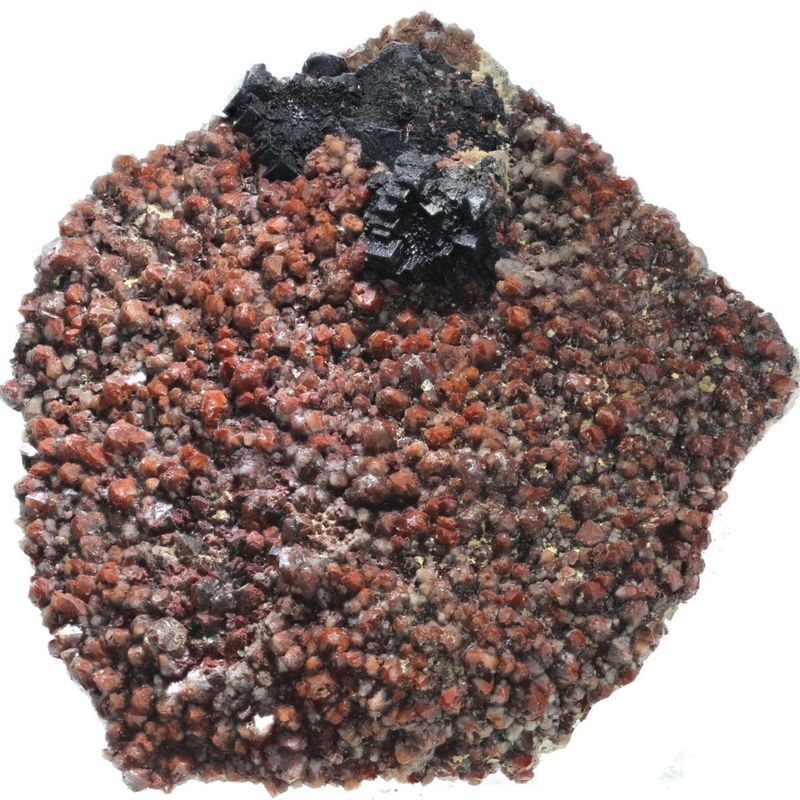
|
|
|
| Back to top |
|
 |
david916

Joined: 30 Apr 2021
Posts: 17
Location: Aylesbury



|
 Posted: May 03, 2021 12:38 Post subject: Re: Collection of David Carter Posted: May 03, 2021 12:38 Post subject: Re: Collection of David Carter |
|
|
Aesthetic Moroccan fluorite/baryte specimen
| Mineral: | Fluorite and Baryte |
| Locality: | | Touroug-El Hamda Mine, Erfoud, Er Rachidia Province, Drâa-Tafilalet Region, Morocco |  |
|
| Dimensions: | 47x38x34mm |
| Description: |
| Yellow-green fluorite twinned crystals with growth patterns on the cube faces, plus nut-shaped baryte attached. The main fluorite crystal face is 37x30mm. |
|
| Viewed: |
23337 Time(s) |
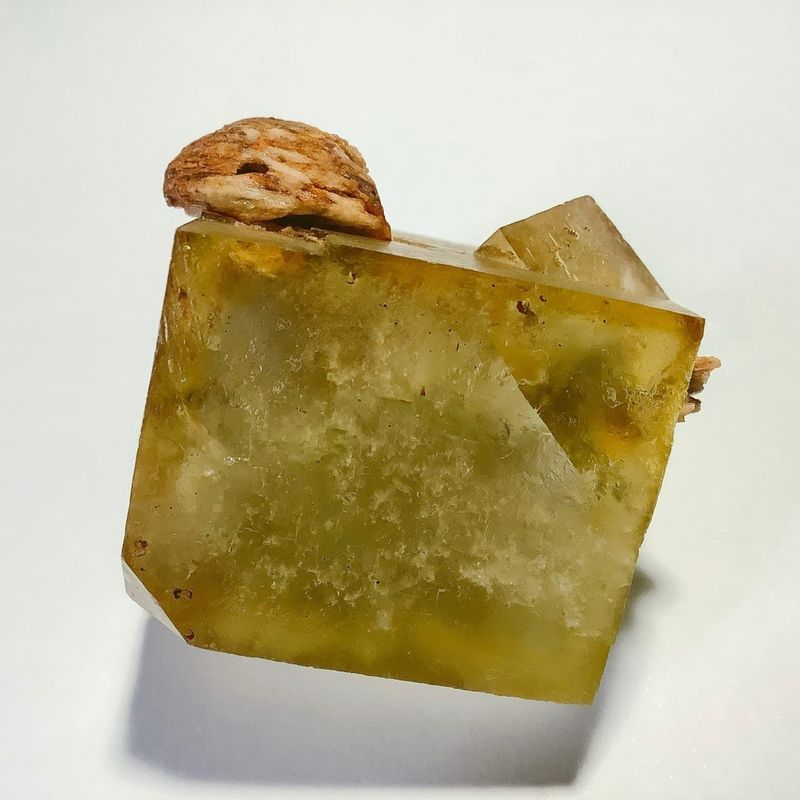
|
|
|
| Back to top |
|
 |
david916

Joined: 30 Apr 2021
Posts: 17
Location: Aylesbury



|
 Posted: May 03, 2021 12:59 Post subject: Re: Collection of David Carter Posted: May 03, 2021 12:59 Post subject: Re: Collection of David Carter |
|
|
Fluorite collected from the ore heap for the processing plant of British Fluorspar Limited (BFL) at Cavendish Mill in Stoney Middleton, Derbyshire, but it was most likely originally extracted from the nearby Milldam Mine in Great Hucklow, Derbyshire.
| Mineral: | Fluorite |
| Locality: | | Cavendish Mill, Stoney Middleton, Derbyshire Dales District, Derbyshire, England / United Kingdom |  |
|
| Dimensions: | 62x40x28mm |
| Description: |
| Colourless fluorite crystals with purple colour zoning around the edges of the cubes. There are also remnants of cockscomb baryte in a couple of areas on the specimen (although not visible in this photograph). |
|
| Viewed: |
23218 Time(s) |
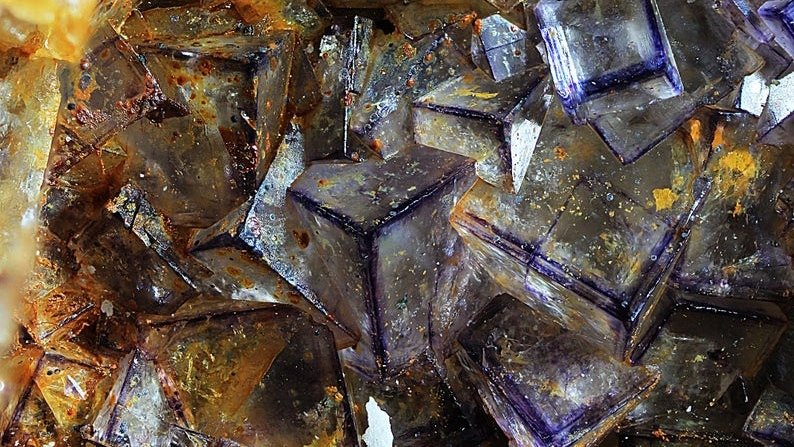
|
|
|
| Back to top |
|
 |
david916

Joined: 30 Apr 2021
Posts: 17
Location: Aylesbury



|
 Posted: May 03, 2021 13:08 Post subject: Re: Collection of David Carter Posted: May 03, 2021 13:08 Post subject: Re: Collection of David Carter |
|
|
A fluorite and quartz ‘fried egg’!
| Mineral: | Fluorite and Quartz |
| Locality: | | Mahodari, Nashik District (Nasik), Maharashtra, India |  |
|
| Dimensions: | 81x70x17mm |
| Description: |
| A sphere of yellow botryoidal fluorite on blue-grey quartz. The fluorite ball itself is 16mm in diameter. Under long-wave UV light the fluorite also produces a bright yellow fluorescent response. |
|
| Viewed: |
23237 Time(s) |
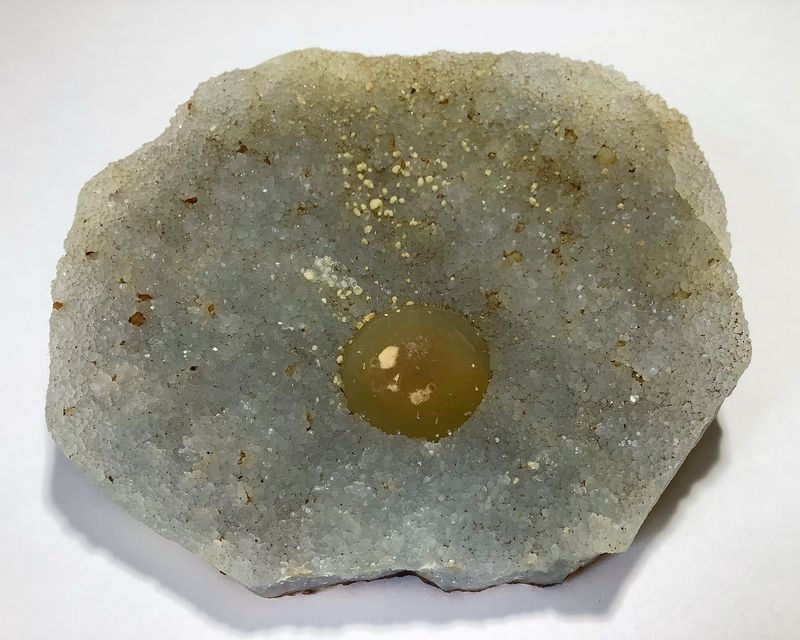
|
|
|
| Back to top |
|
 |
david916

Joined: 30 Apr 2021
Posts: 17
Location: Aylesbury



|
 Posted: May 03, 2021 13:19 Post subject: Re: Collection of David Carter Posted: May 03, 2021 13:19 Post subject: Re: Collection of David Carter |
|
|
Fluorite on creedite from the Navidad Mine in Durango, Mexico
| Mineral: | Fluorite and Creedite |
| Locality: | | Navidad Mine, Abasolo, Rodeo, Municipio de Rodeo, Durango, Mexico |  |
|
| Dimensions: | 27x26x21mm |
| Description: |
| Gemmy mauve and pale green fluorite partial crystals (to 11mm) adding a colourful accent to the predominantly colourless creedite prismatic crystals (in places these have that distinctive Navidad orange hue). |
|
| Viewed: |
23212 Time(s) |
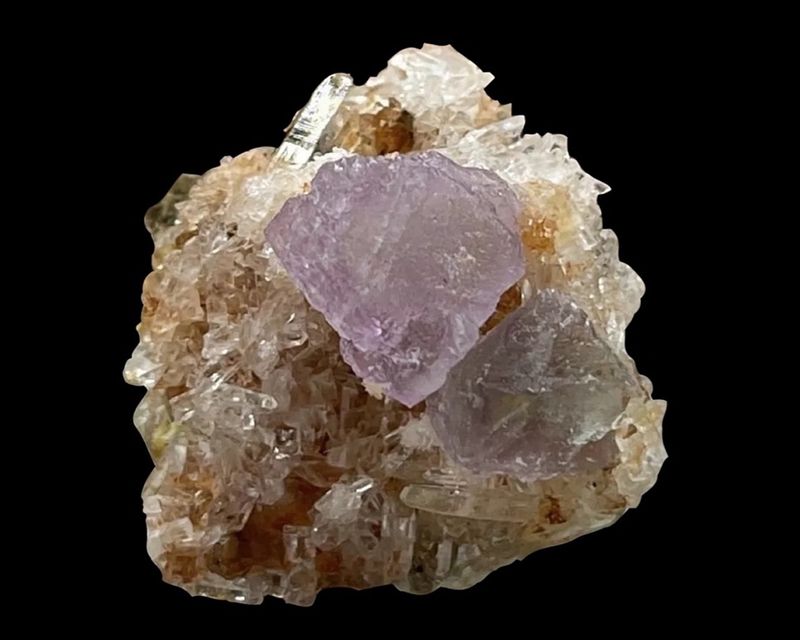
|
|
|
| Back to top |
|
 |
david916

Joined: 30 Apr 2021
Posts: 17
Location: Aylesbury



|
 Posted: May 03, 2021 13:34 Post subject: Re: Collection of David Carter Posted: May 03, 2021 13:34 Post subject: Re: Collection of David Carter |
|
|
Micro specimen of fluorite on quartz from the old fluorite mine and dumps at Bois le Duc near Foisches in the Ardennes department of northern France.
| Mineral: | Fluorite |
| Locality: | | Bois le Duc, Foisches, Charleville-Mézières District, Ardennes, Grand Est, France |  |
|
| Dimensions: | FOV 3mm |
| Description: |
| Deep reddish-purple cuboctahedral fluorite crystals on a bed of quartz over a sandstone matrix from Bois le Duc. |
|
| Viewed: |
23246 Time(s) |
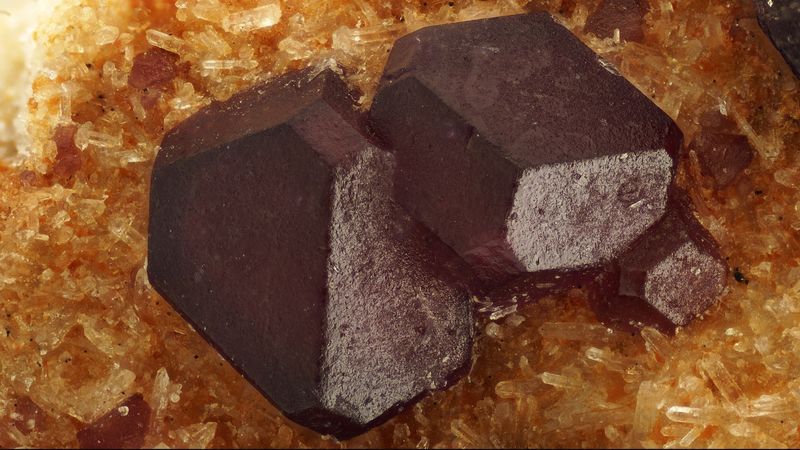
|
|
|
| Back to top |
|
 |
Firmo Espinar

Joined: 05 Apr 2017
Posts: 777
Location: Medellín, Colombia.



|
 Posted: May 03, 2021 15:53 Post subject: Re: Collection of David Carter Posted: May 03, 2021 15:53 Post subject: Re: Collection of David Carter |
|
|
Hi David.
Welcome to FMF.
Please, you can read this thread to avoid overloading the users posts box:
How to add multiple photos to a Post
Thank you.
|
|
| Back to top |
|
 |
david916

Joined: 30 Apr 2021
Posts: 17
Location: Aylesbury



|
 Posted: May 03, 2021 16:02 Post subject: Re: Collection of David Carter Posted: May 03, 2021 16:02 Post subject: Re: Collection of David Carter |
|
|
| Thanks and will do.
|
|
| Back to top |
|
 |
david916

Joined: 30 Apr 2021
Posts: 17
Location: Aylesbury



|
 Posted: May 06, 2021 10:24 Post subject: Re: Collection of David Carter Posted: May 06, 2021 10:24 Post subject: Re: Collection of David Carter |
|
|
Two micro specimens of bastnäsite on dolomite from Trimouns Talc Mine, Luzenac, Foix, Ariège, Occitanie, France. The name of Trimouns comes from the langue d’Oc words Trés Monts (three mountains), in reference to the three peaks that overlook the huge talc quarry/mine. Talc, a hydrated magnesium silicate, is the softest stone on our planet. It is hydrophobic, inert and composed of layers. Talc deposits form as a result of the transformation of high magnesium rocks by siliceous hydrothermal fluids. The seam at Trimouns was formed 300 million years ago in a fault between two masses of rock, one composed essentially of mica schist and the other of dolomite. In this fault, the rock was ground by the pressure of the two masses, allowing the infiltration of water containing large amounts of magnesium. The magnesium attached itself to the dolomite to form magnesium silicate: talc. In the same way, the mica schists were transformed into chlorite. Most talc originates from the alteration of dolomite, or ultramafic intrusive rocks. Following this process, talc is always found in combination with other minerals. Whilst carbonates and chlorite are the most common associated minerals, each talc deposit has a unique morphology and mineralogy. The Trimouns talc/chlorite deposit is a mineral locality of international significance, producing fine crystal specimens of rare earth element-bearing species of allanite/dissakisite, bastnäsite, synchisite, parisite, hingganite and iimoriite. Often micromount-size, these minerals occur in dolomite vugs in a contact zone of the deposit.
| Mineral: | Hydroxylbastnäsite-(Ce) |
| Locality: | | Trimouns Mine, Luzenac, Haute-Ariège, Foix, Ariège Department, Occitanie, France |  |
|
| Dimensions: | FOV 5mm |
| Description: |
| A zoned honey-yellow bastnäsite crystal upon white dolomite. |
|
| Viewed: |
22840 Time(s) |
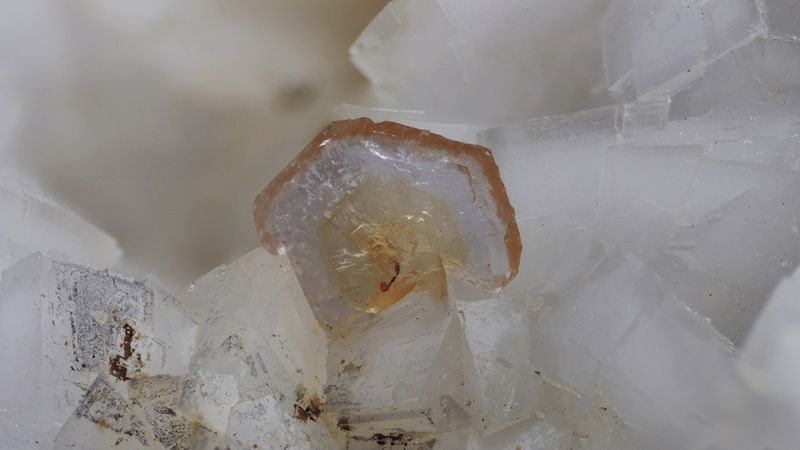
|
| Mineral: | Hydroxylbastnäsite-(Ce) |
| Locality: | | Trimouns Mine, Luzenac, Haute-Ariège, Foix, Ariège Department, Occitanie, France |  |
|
| Dimensions: | FOV 5mm |
| Description: |
| Tabular honey-yellow bastnäsite crystal upon white dolomite. |
|
| Viewed: |
22855 Time(s) |
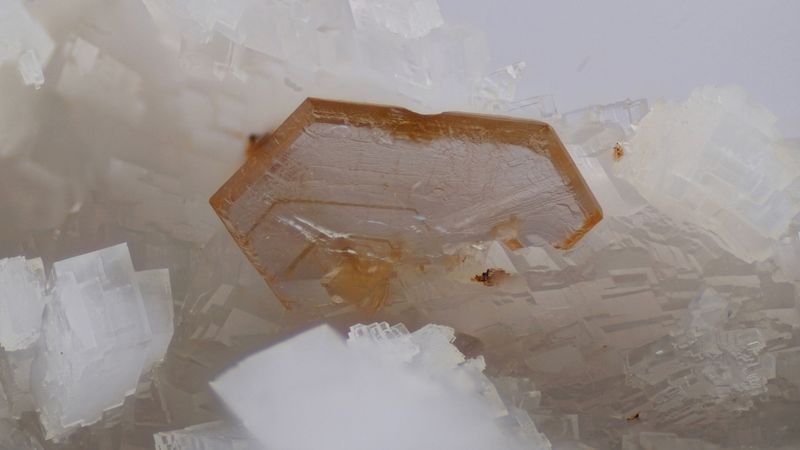
|
|
|
| Back to top |
|
 |
david916

Joined: 30 Apr 2021
Posts: 17
Location: Aylesbury



|
 Posted: May 07, 2021 06:29 Post subject: Re: Collection of David Carter Posted: May 07, 2021 06:29 Post subject: Re: Collection of David Carter |
|
|
Micro specimen of galena on siderite from Le Rivet Quarry near Peyrebrune in the Occitanie region of France. The geology of this quarry consists of sedimentary cover (Tertiary to Present), Ordovician black schists, interstratified metadolerites and metabasalts, Hercynian granitic and micro-granitic dykes, and the main Pb–Zn mineralised quartz veins of the Peyrebrune ore deposit. Both Le Rivet Quarry and the adjacent Peyrebrune Quarry were worked for fluorite, limonite and sphalerite. The Peyrebrune Mine is also located nearby and that was worked until 1972 producing calcite, galena, siderite and sphalerite. Some of the lead-zinc veins of the old mine surface in Le Rivet Quarry. A mines and mineral resources information circular by the U.S. Department of the Interior, Bureau of Mines, 1962 reported on Peyrebrune Mine, “Société des mines et Urines de Peyrebrune operates a mine in narrow fissure veins cutting igneous rocks. Average grade is about 5% lead and 1% zinc. Reserves are not known, but assumed to be quite small.” However, when it eventually closed this 520m deep mine with 30-35km of adits on 25 levels had worked two million tons of ore resulting in 65,000 tons of lead, 37,000 tons of zinc and 160 tons of silver!
| Mineral: | Galena |
| Locality: | | Rivet Quarry, Peyrebrune area, Montredon-Labessonnié, Le Haut Dadou, Castres, Tarn, Occitanie, France |  |
|
| Dimensions: | FOV 4mm |
| Description: |
| A well-developed lead grey and silvery truncated galena crystal on blades of pale yellow to tannish siderite from Le Rivet Quarry. |
|
| Viewed: |
22742 Time(s) |
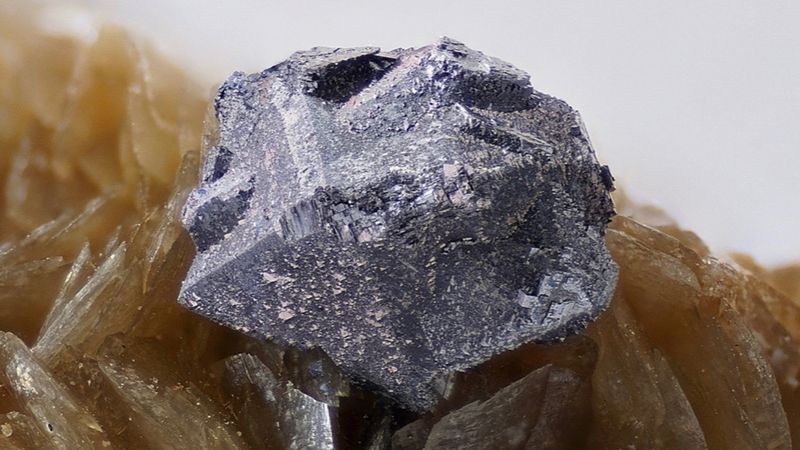
|
|
|
| Back to top |
|
 |
|





